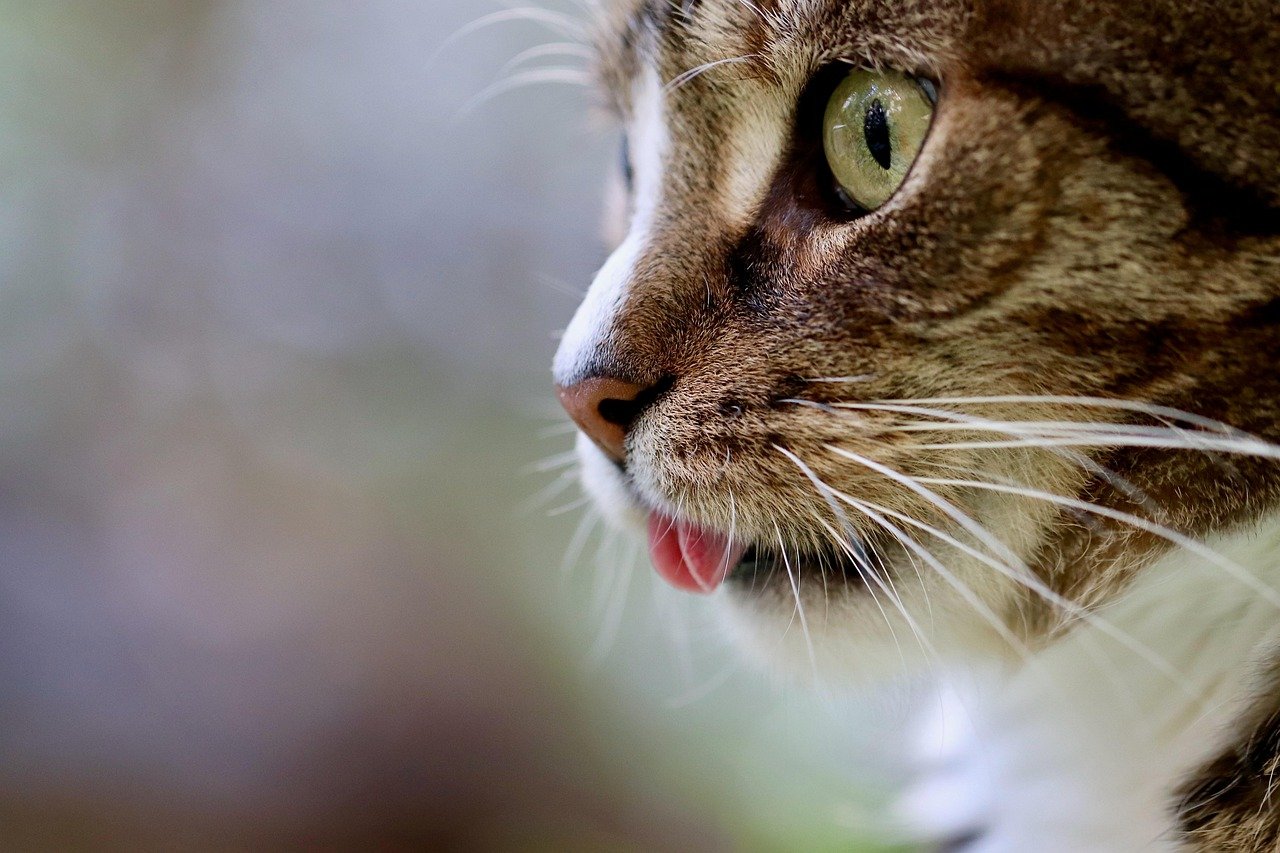Imagine stepping into a new world where everything smells different, the sounds are unfamiliar, and the faces around you are strangers. That’s exactly what it feels like for a rescue cat entering a new home. Many have faced loneliness, fear, or even trauma before finding their way to your arms. But here’s the wonderful part: with just a few gentle habits, you can help unlock their trust and let them know they’re finally safe. These small, daily gestures mean the world to a rescue cat—sometimes even more than the fanciest toys or softest beds. Let’s dive into the little things you can do that speak volumes to a heart that’s learning to trust again.
Start With a Quiet Welcome

When a rescue cat first arrives, the urge to shower them with affection can be overwhelming. But imagine being the cat—new place, new people, nowhere to hide. It’s best to keep things calm and quiet at first. Soft voices, gentle movements, and a peaceful environment go a long way. Turn off loud TVs or radios, and avoid having lots of visitors for the first few days. These simple actions give your new friend time to breathe, look around, and start to feel at ease. A quiet welcome says: “This is a safe space, and you’re not alone.”
Give Them Their Own Safe Space

A cozy nook, a covered bed, or even a cardboard box in a quiet room can offer tremendous comfort. Rescue cats often crave somewhere to hide, especially in those first days. Provide a designated spot where they can retreat whenever they feel overwhelmed. Make sure it’s away from heavy foot traffic, barking dogs, or noisy kids. Add a soft blanket and a few familiar-smelling items if possible. This simple act gives your cat the power to control their environment—a huge confidence booster for any nervous newcomer.
Offer Consistent Routines

Cats, especially those who’ve faced chaos or neglect, thrive on predictability. Set regular times for feeding, play, and quiet time. Keep the litter box, food, and water bowls in the same spot. Use the same phrases or hand gestures when interacting with them. Over time, your cat will learn what to expect, which eases anxiety and builds trust. Routines tell your rescue cat that the world isn’t so scary after all—there’s order, and they belong in it.
Feed With Love and Patience

Food is more than just nourishment for rescue cats. It’s a sign of care and safety. Offer meals on a regular schedule, and try to stick to foods that are gentle on sensitive stomachs. Sit quietly nearby while they eat, but don’t crowd them—let them come to you at their own pace. If your cat is too scared to eat, try offering treats from your hand, or simply leave the bowl and walk away. Each meal is a chance for your cat to learn that good things come from you.
Use Gentle, Slow Movements

Sudden gestures can startle even the bravest cats, let alone one with a rough past. Move slowly when reaching out, and let your hands rest on the floor so your cat can sniff and investigate first. Blink slowly at your cat—this “cat kiss” is a universal sign of trust. If you need to pick them up, scoop them gently and talk softly. These mindful movements show your cat that you’re not a threat, but a friend.
Respect Their Need for Space

It’s natural to want to cuddle and play with your new rescue, but not all cats are ready for close contact right away. If your cat hides under the bed or avoids your touch, let them be. Sit nearby and quietly read or work, letting them approach when they’re ready. Never force petting or pick them up against their will. By respecting their boundaries, you’re showing them that their feelings matter—a crucial lesson for a cat learning to trust again.
Talk Softly and Often

Your voice is a powerful tool for comfort. Speak to your rescue cat in a gentle, soothing tone, even if you’re just narrating your day. Avoid yelling or loud laughter, which can feel threatening. Over time, your cat will associate your voice with safety and kindness. You might be surprised how quickly they start responding with purrs, slow blinks, or even quiet meows of their own.
Offer Playtime Without Pressure

Play is a wonderful way to bond, but it’s important not to overwhelm a nervous cat. Start with wand toys, feather teasers, or soft balls that let your cat interact from a distance. Let them set the pace—sometimes just watching you wiggle a toy is enough at first. Gradually, as they build confidence, they’ll join in more enthusiastically. Play not only provides exercise but also helps your cat practice their natural instincts in a safe, fun way.
Use Familiar Scents for Comfort

Scent is everything to a cat. If possible, bring home a blanket or toy from the shelter that smells familiar. You can also rub a soft cloth on your cat and place it around your home, helping them “mark” their territory in a gentle way. Avoid strong cleaning products or air fresheners, as unfamiliar smells can be stressful. The more your cat recognizes their own scent in the space, the more secure they’ll feel.
Encourage Exploration at Their Pace

When your rescue is ready, open up new rooms or spaces one at a time. Let them sniff and investigate without pushing or carrying them around. Place treats or toys in different corners to reward their bravery. If they seem scared, give them time to retreat and try again later. This gradual exploration helps your cat feel in control, turning a big, scary house into a safe, familiar home.
Offer High Perches and Hideaways

Cats love to observe from above or hide away when they’re unsure. Provide cat trees, shelves, or window perches where your rescue can watch the world in safety. Even a simple chair with a blanket draped over it can become a fortress. These elevated or hidden spots give your cat a sense of security and let them take in their surroundings without feeling exposed.
Give Gentle Affection—On Their Terms

Some rescue cats crave cuddles, while others prefer less touch. Pay close attention to your cat’s signals: a slow blink, a soft purr, or leaning into your hand means they’re comfortable. If they pull away, flatten their ears, or twitch their tail, it’s time to stop. Gentle petting around the cheeks, under the chin, or behind the ears is usually a safe bet. Always let your cat decide how much affection they want—they’ll love you even more for it.
Reward Small Steps With Treats

Celebrate every little milestone—coming out from hiding, approaching you, or using their litter box. Offer a tasty treat or a favorite toy as a reward. Positive reinforcement helps your cat link good things with brave behaviors. Just be careful not to startle them with sudden movements or loud praise. Sometimes, a soft “good job” and a gentle pat is all it takes to make your rescue feel like a superstar.
Make Litter Box Time Stress-Free

A clean, accessible litter box is key to a cat’s comfort. Place it in a quiet area, away from loud appliances or busy hallways. Scoop daily and change the litter regularly. Some rescues may prefer an open box, while others feel safer with a covered one—pay attention to their preferences. A stress-free litter box routine prevents accidents and reassures your cat that their needs matter.
Provide Regular Grooming Sessions

Grooming isn’t just about keeping fur tidy—it’s a bonding experience. Use a soft brush and gentle strokes, especially if your rescue has long hair or mats. If they’re nervous, start with short sessions and lots of treats. Over time, brushing becomes a calming ritual that builds trust. For some cats, even just sitting nearby while they groom themselves can be a huge comfort.
Introduce New People and Pets Slowly

Rescue cats may be wary of strangers or other animals. If you have family members or other pets, let your cat adjust at their own pace. Keep initial meetings short and supervised. Let your cat watch from a distance, and avoid forcing interactions. Gradually, as they feel more confident, they’ll start to approach on their own terms. Patience here is key—it’s better to go slow than to rush and risk setbacks.
Keep Their Environment Predictable

Big changes—like moving furniture, redecorating, or hosting parties—can unsettle a rescue cat. Try to keep their environment as predictable as possible, especially in the early days. If changes are unavoidable, introduce them slowly and with plenty of reassurance. Familiar objects, scents, and routines help your cat feel rooted, no matter what’s happening around them.
Offer Comfort During Storms or Loud Noises

Thunderstorms, fireworks, or even vacuum cleaners can terrify a rescue cat. Create a safe space with blankets and hideaways where they can retreat. Play soft music or use a white noise machine to muffle scary sounds. Sit nearby and talk softly, letting them know you’re there. These small comforts remind your cat that, no matter how loud or frightening the world gets, you’re their safe harbor.
Use Positive, Calm Energy

Cats are incredibly sensitive to human emotions. If you’re anxious, angry, or upset, your cat can pick up on it. Try to maintain a calm and positive energy around your rescue. Take deep breaths, move slowly, and keep your tone gentle. Your peaceful presence is like a warm blanket, wrapping your cat in comfort and reassurance.
Be Patient—Healing Takes Time

Perhaps the most important habit of all: patience. Healing from fear or trauma doesn’t happen overnight. Some rescue cats blossom in days; others need weeks or even months. Celebrate every victory, no matter how tiny. Remember that your steady love and gentle habits are working, even if the progress is slow. Over time, trust grows, and your once-nervous rescue will begin to shine.
Embrace the Joy of Second Chances

Every rescue cat is a story of hope—a living testament to the power of second chances. By practicing these little habits, you become the hero in your cat’s journey back to happiness. There’s nothing quite like the moment when a once-fearful cat curls up in your lap or greets you with a quiet purr. These are the moments that make it all worthwhile. Would you have guessed how much difference these small acts of kindness can make?
Hi, I’m Bola, a passionate writer and creative strategist with a knack for crafting compelling content that educates, inspires, and connects. Over the years, I’ve honed my skills across various writing fields, including content creation, copywriting, online course development, and video scriptwriting.
When I’m not at my desk, you’ll find me exploring new ideas, reading books, or brainstorming creative ways to solve challenges. I believe that words have the power to transform, and I’m here to help you leverage that power for success.
Thanks for stopping by, Keep coming to this website to checkout new articles form me. You’d always love it!





